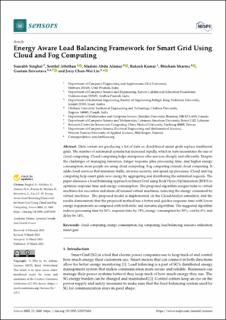| dc.description.abstract | Data centers are producing a lot of data as cloud-based smart grids replace traditional grids. The number of automated systems has increased rapidly, which in turn necessitates the rise of cloud computing. Cloud computing helps enterprises offer services cheaply and efficiently. Despite the challenges of managing resources, longer response plus processing time, and higher energy consumption, more people are using cloud computing. Fog computing extends cloud computing. It adds cloud services that minimize traffic, increase security, and speed up processes. Cloud and fog computing help smart grids save energy by aggregating and distributing the submitted requests. The paper discusses a load-balancing approach in Smart Grid using Rock Hyrax Optimization (RHO) to optimize response time and energy consumption. The proposed algorithm assigns tasks to virtual machines for execution and shuts off unused virtual machines, reducing the energy consumed by virtual machines. The proposed model is implemented on the CloudAnalyst simulator, and the results demonstrate that the proposed method has a better and quicker response time with lower energy requirements as compared with both static and dynamic algorithms. The suggested algorithm reduces processing time by 26%, response time by 15%, energy consumption by 29%, cost by 6%, and delay by 14%. | en_US |

